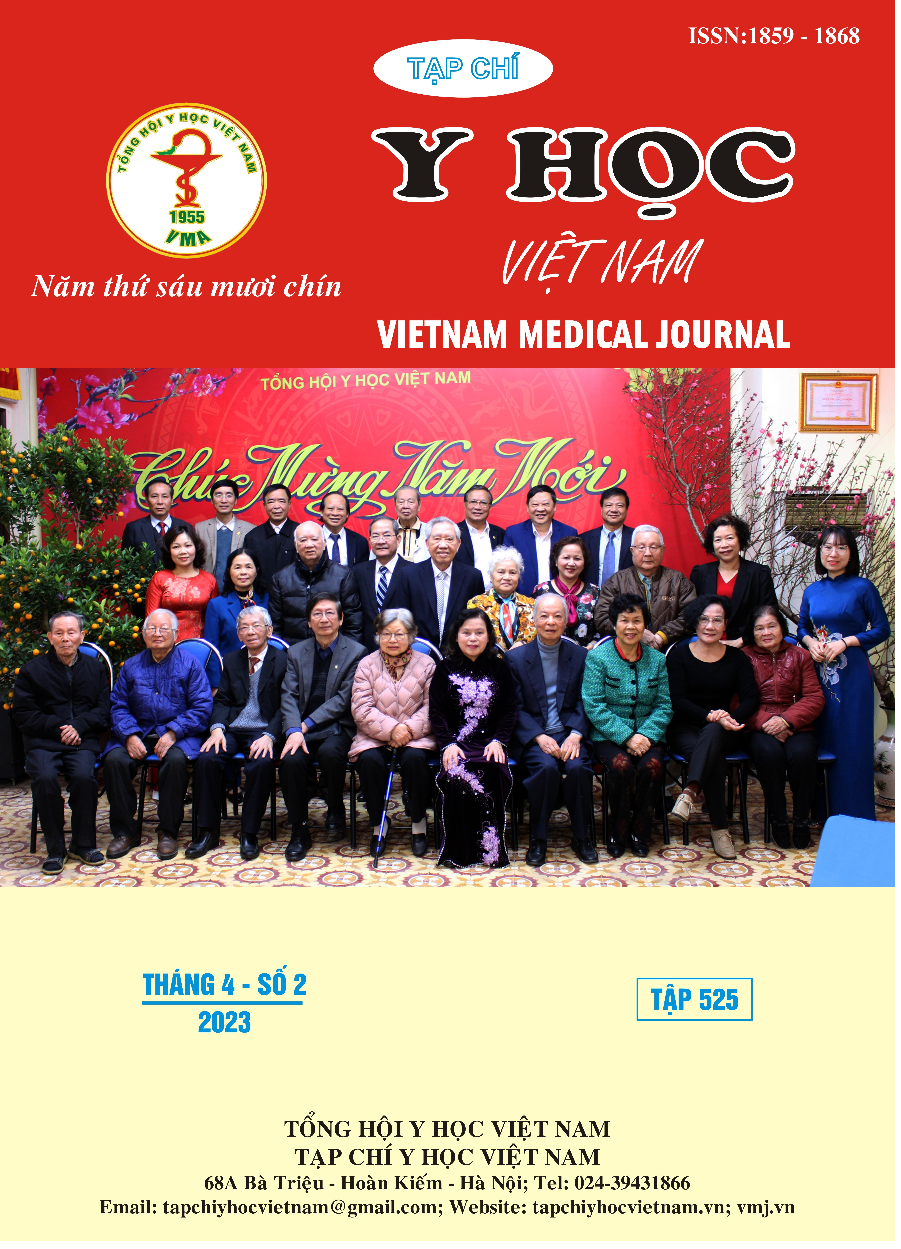EFFECTIVENESS OF IMPROVING CRUST EYE IN PATIENTS USING OCUSOFT TO TREATED DEMODEX BLEPHARITIS
Main Article Content
Abstract
Objectives: Effectiveness of improving crust eye in patients using Ocusoft to treated Demodex blepharitis. Subjects and methods: Prospective corelation study, 102 patient's crust eyes. test found 1 Demodex on eyelash follicles treated with Ocusoft, at Nghe An Eye Hospital from July 2021 to July 2022. Results: After 1 month of treatment, up to 92.2% of patients' symptoms improved well, and 7.8% of patients rated improvement with few symptoms, no patient rated no improvement or bad. than. The number of patients diagnosed with crust eye with Schimer I test result <10mm gradually decreased through follow-up visits, the number of normal patients with result >15mm gradually increased, the difference before treatment and 1 month after treatment is statistically significant with p<0.05. The number of crust eyes patients with BUT test time less than 10 seconds gradually decreased with follow-up visits, patients with BUT time more than 10 seconds gradually increased after 2 weeks and 1 month. The difference is statistically significant with p<0.05. OSDI score for assessing ocular surface damage gradually decreased through follow-up visits after 2 weeks and 1 month of treatment, the difference was statistically significant with p < 0.05, the percentage of high OSDI scores gradually decreased, the ratio The low OSDI score increases gradually, the difference is statistically significant with p<0.05.
Article Details
Keywords
Crust eye, Ocusoft, Demodex
References
2. Adenis J.P., Brasseur G., Demailly P., et al. (1996). Comparative evaluation of efficacy and safety of ciprofloxacin and norfloxacin ophthalmic solutions. Eur J Ophthalmol, 6(3), 287–292.
3. Bhandari V., Reddy J.K. (2014). Blepharitis: always remember demodex. Middle East Afr J Ophthalmol, 21(4), 317–320.
4. Gao Y.-Y., Di Pascuale M.A., Li W., et al. (2005). High prevalence of Demodex in eyelashes with cylindrical dandruff. Invest Ophthalmol Vis Sci, 46(9), 3089–3094.
5. Bron A.J., Benjamin L., Snibson G.R. (1991). Meibomian gland disease. Classification and grading of lid changes. Eye (Lond), 5 (Pt 4), 395–411.
6. Liang L., Liu Y., Ding X., et al. (2018). Significant correlation between meibomian gland dysfunction and keratitis in young patients with Demodex brevis infestation. Br J Ophthalmol, 102(8), 1098–1102.
7. Craig J.P., Nelson J.D., Azar D.T., et al. (2017). TFOS DEWS II Report Executive Summary. Ocul Surf, 15(4), 802–812.
8. McCulley J.P., Sciallis G.F. (1977). Meibomian keratoconjunctivitis. Am J Ophthalmol, 84(6), 788–793.
9. English F.P. (1970). The role of the acarid Demodex folliculorum in ophthalmology. Trans Aust Coll Ophthalmol, 2, 89–92.


